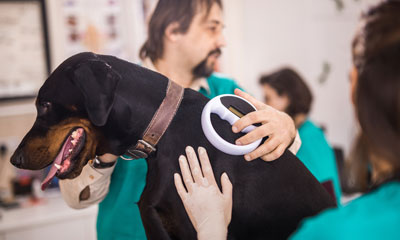
Microchipping your pet
No bigger than a grain of rice, each implantable computer chip has a unique, encoded identification number — vital information that can help to reunite you with your lost pet.
How does it work?
- Microchips are placed under your pet’s skin with a needle and syringe. It’s like any usual injection procedure, but the clinical team member uses a larger needle to accommodate the microchip.
- Your pet’s identification number is linked to your contact information — your name, address and telephone number.
- If your pet is lost and is taken to a veterinary clinic or an animal shelter, staff members can scan your pet for a microchip. If a microchip is detected, staff members will call a pet recovery service and report your pet’s unique identification number.
- A representative will contact you to report your pet’s location. If you move to another location, it’s vital to update your contact information and ensure that all
Risks
The risks associated with microchipping are minimal. But in some rare cases, a pet can experience excessive bleeding or develop an infection at the injection site. Improper implantation could lead to tissue injury. In some cases, a microchip may interfere with advanced medical imaging of your pet.

